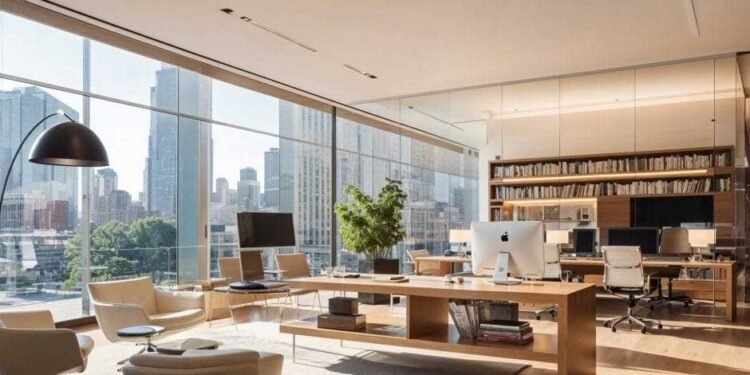As businesses continue to evolve in response to modern demands, so too do the spaces that house them. Renovations for commercial properties are no longer just about fresh paint or new furniture—they are about creating dynamic environments that inspire, perform, and sustain. In 2025, the focus is on merging aesthetics with functionality, sustainability, and technology. Here’s a look at the latest trends driving change in commercial renovations this year.
1. Smart Technology Integration
Technology is no longer optional in commercial spaces; it’s a necessity. Renovations in 2025 are embracing smart systems to improve efficiency, comfort, and security. According to Estate Home Management professionals, automated lighting, climate control, and advanced security systems powered by AI are becoming standard. These upgrades not only improve the user experience but also reduce operational costs by optimizing energy use.
For example, integrating Internet of Things (IoT) devices — a form of Smart technology for businesses in DFW and elsewhere — allows real-time monitoring of energy consumption, thereby ensuring organizations mee
2. Flexible and Multi-Functional Spaces
The rise of hybrid work models has significantly influenced how businesses approach commercial renovations. Multi-functional spaces that can easily transition between different uses are highly sought after. Movable walls, modular furniture, and adaptable layouts enable companies to maximize their square footage without compromising on functionality.
This flexibility is particularly beneficial for co-working spaces and event venues that cater to diverse needs. Whether it’s a conference room doubling as a lounge or an open office that transforms into a workshop space, adaptability is key.
3. Sustainable Design and Materials
Sustainability continues to dominate conversations in the commercial sector. Renovations are leaning heavily towards eco-friendly materials such as reclaimed wood, recycled metal, and low-VOC (volatile organic compound) paints. Green building certifications, such as LEED and BREEAM, are becoming benchmarks for quality renovations.
Energy-efficient lighting, improved insulation, and solar panel installations are also popular upgrades. These changes not only reduce environmental impact but also appeal to environmentally-conscious tenants and clients.
4. Biophilic Design Elements
Biophilic design, which incorporates natural elements into indoor spaces, remains a strong trend in 2025. Adding greenery, natural lighting, and water features creates an inviting environment that promotes well-being and productivity.
For example, living walls and indoor gardens are gaining traction in office buildings, retail spaces, and restaurants. These features not only enhance aesthetics but also improve air quality and provide a calming effect for occupants.
5. Wellness-Focused Spaces
In line with biophilic design, renovations for commercial properties are increasingly prioritizing wellness, making retail interior design an essential consideration. This includes features such as improved air filtration systems, ergonomic workstations, and spaces dedicated to relaxation and mental health.
Fitness rooms, meditation pods, and wellness lounges are now common inclusions in office renovations. These additions show a commitment to employee well-being, which in turn boosts morale and productivity.
6. Emphasis on Branding Through Design
Businesses are using renovations as an opportunity to strengthen their brand identity. Custom design elements, unique colour schemes, and personalized décor help businesses create a memorable impression on clients and employees alike.
For instance, companies are incorporating their logos and brand colours into flooring, walls, and even furniture. This trend ensures that the space is not only functional but also visually aligns with the company’s values and mission.
7. Increased Use of Open Concepts
Open-concept designs continue to dominate, especially in office spaces. These layouts encourage collaboration, communication, and transparency among teams. However, in 2025, there’s a growing emphasis on balancing openness with privacy.
Acoustic panels, phone booths, and quiet zones are being incorporated to address the need for focused work within open environments. This balance ensures that employees have the flexibility to collaborate while also enjoying spaces for concentration.
8. Digital Collaboration Hubs
With the rise of remote and hybrid work models, digital collaboration hubs are becoming essential. Renovations are now incorporating high-tech meeting rooms equipped with video conferencing tools, interactive whiteboards, and seamless connectivity.
These spaces ensure that remote team members can participate as effectively as those on-site, fostering inclusivity and efficiency. Investing in such technology is a forward-thinking move that future-proofs commercial properties.
Bringing It All Together
The trends shaping commercial renovations in 2025 are a reflection of the modern business landscape—one that values innovation, sustainability, and adaptability. By incorporating these elements into renovation plans, businesses can create spaces that not only look great but also function seamlessly.
If you’re considering a renovation, it’s essential to partner with experts who understand these evolving trends.












